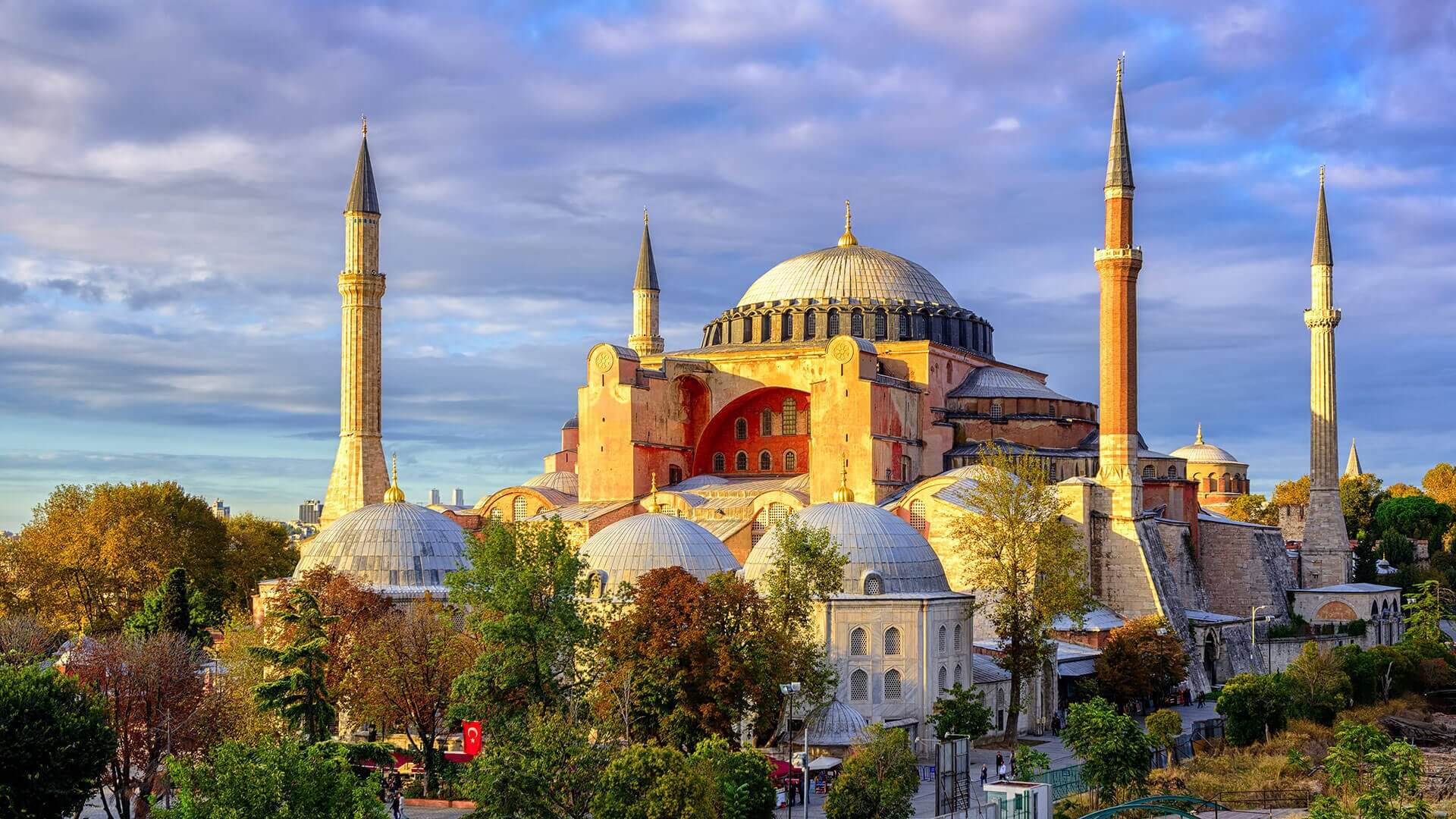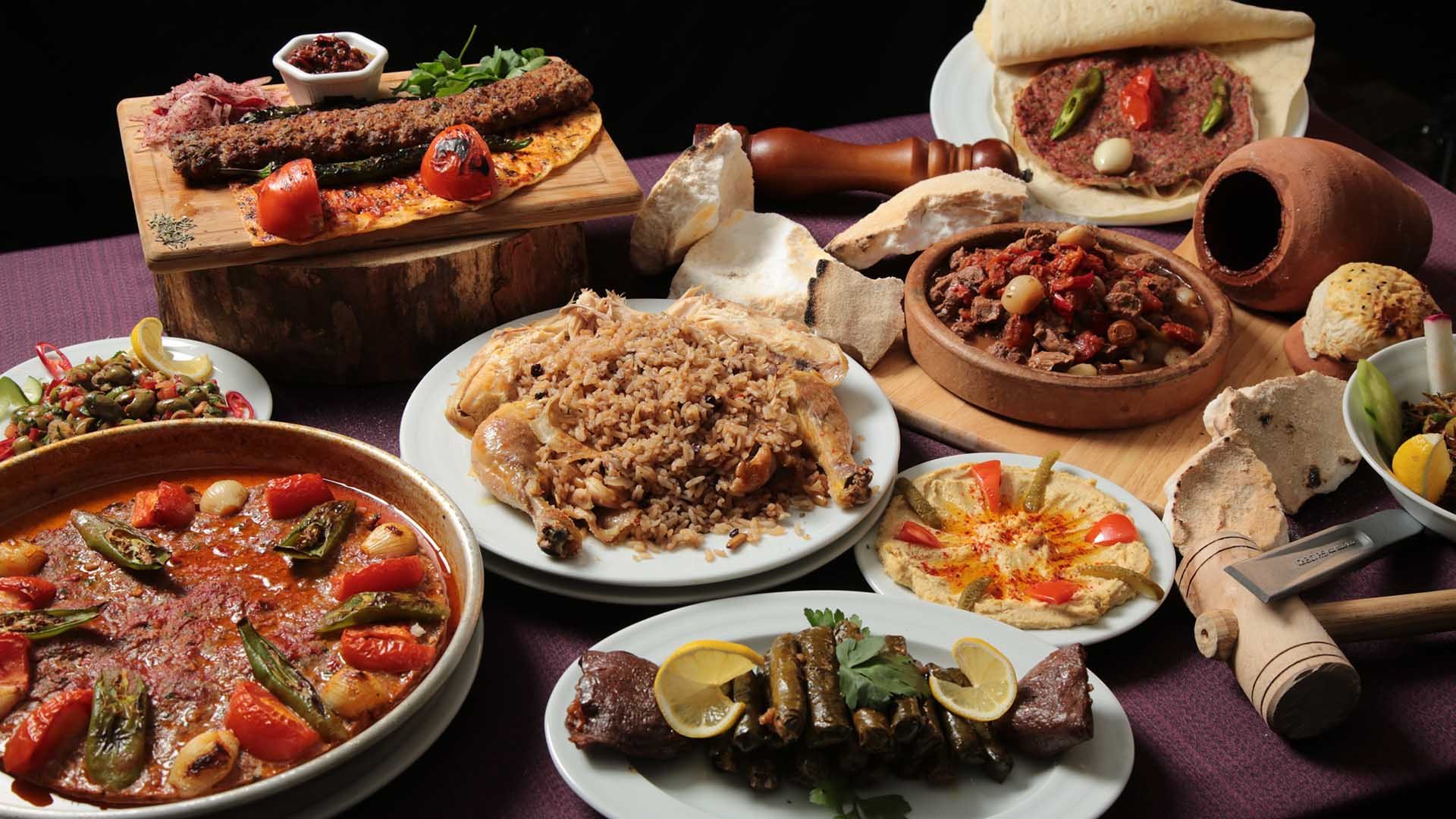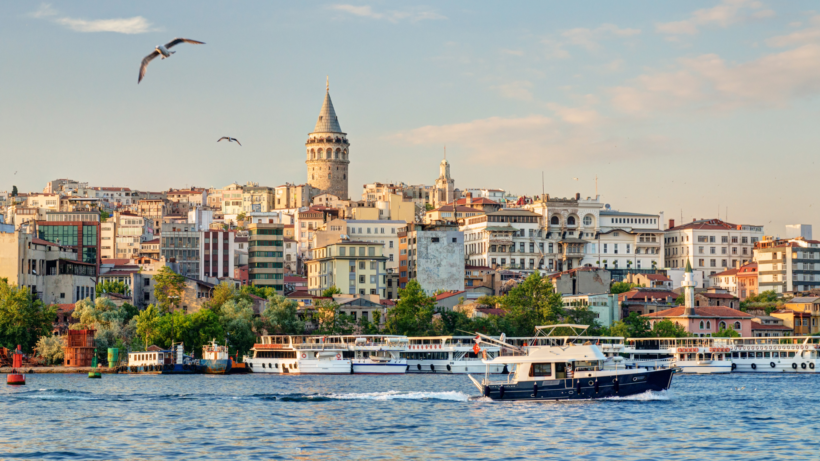Istanbul, a city with a rich history and vibrant culture, is a must-visit destination for travelers seeking a memorable experience. In this comprehensive guide to the city, we’ll explore its fascinating history, top attractions including the Blue Mosque, Hagia Sophia, and Grand Bazaar, delightful Turkish cuisine, the best time to visit, and practical tips for making the most of your trip.
YAZI İÇERİĞİ
Whether you’re drawn to historical landmarks or eager to indulge in flavorful dishes, this guide to the city of Istanbul has something for every traveler.
Brief History of Istanbul
Istanbul, formerly known as Byzantium and Constantinople, has a rich and diverse history that spans over thousands of years. Here are some key points in the historical timeline of this fascinating city:
Ancient Times: Istanbul’s history dates back to around 660 BC when it was founded as Byzantium by the Greek colonists. It later became the capital of the Eastern Roman Empire.
Roman and Byzantine Period: In 330 AD, the city was renamed Constantinople after Roman Emperor Constantine the Great. For over a millennium, it served as the capital of the Byzantine Empire, showcasing remarkable achievements in art, culture, and architecture.
Ottoman Era: In 1453, the city fell to the Ottoman Empire under the command of Sultan Mehmed the Conqueror. Istanbul became the new capital of the thriving Ottoman Empire, consolidating its status as a major cultural and trade hub.
Modern Times: Following World War I, Istanbul transitioned into the capital of the newly formed Republic of Turkey in 1923, under the visionary leadership of Mustafa Kemal Atatürk.
Over the centuries, Istanbul has been a melting pot of various civilizations, leaving a lasting impact on its vibrant culture, traditions, and architectural marvels. Today, the city stands as a bridge between the East and the West, showcasing a unique blend of history and modernity.
This historical insight forms the foundation for anyone looking to delve into this mesmerizing city and serves as a starting point for our guide to the city.

Top Attractions in Istanbul
When visiting Istanbul, there are several must-see attractions that capture the city’s rich history, culture, and beauty. Here are some of the top attractions to include in your guide to the city:
The Blue Mosque
- Officially known as the Sultan Ahmed Mosque, this iconic landmark is famed for its stunning blue tiles adorning the interior, earning it the nickname “Blue Mosque”. Visitors can marvel at its impressive architecture and serene courtyards.
Hagia Sophia
- Once a church, later a mosque, and now a museum, Hagia Sophia showcases a blend of Byzantine and Ottoman architectural elements. It is renowned for its massive dome and remarkable mosaics, offering a glimpse into Istanbul’s diverse history.
Grand Bazaar
- Step into one of the world’s oldest and largest covered markets, where you can immerse yourself in a bustling, colorful maze of shops offering everything from spices and textiles to jewelry and carpets. It’s a vibrant sensory experience not to be missed.
Bosphorus Cruise
- Embark on a scenic cruise along the Bosphorus Strait, where Europe and Asia meet. Take in panoramic views of the city’s skyline, historic palaces, and charming waterfront neighborhoods, providing a unique perspective of Istanbul.
These attractions offer a blend of cultural immersion, architectural marvels, and unforgettable experiences, making them essential stops on your guide to the city of Istanbul.
The Blue Mosque
The Blue Mosque, also known as Sultan Ahmed Mosque, is a stunning architectural marvel and a must-see destination for anyone visiting Istanbul. Here’s why you should include it in your guide to the city:
Unique Architecture: The mosque’s impressive architecture features six minarets, multiple domes, and striking blue tiles that adorn the interior, giving it the nickname “Blue Mosque”.
Historical Significance: Built in the early 17th century, the Blue Mosque is an important part of Istanbul’s history and culture, reflecting the city’s rich heritage.
Visitor Experience: As you step inside, you’ll be awed by the intricate tile work, stained glass windows, and the vast open space of the central prayer area. Visitors can also witness the daily prayers and immerse themselves in the peaceful atmosphere.
Guided Tours: Consider joining a guided tour to gain a deeper understanding of the mosque’s history, architecture, and cultural significance. Knowledgeable guides provide valuable insights that enhance your experience.
Comparing with Hagia Sophia: While exploring Istanbul, a comparison between the Blue Mosque and Hagia Sophia is interesting. While the latter represents Byzantine architecture and Christian influence, the Blue Mosque showcases Ottoman design and Islamic heritage.
Practical Tips: When visiting the mosque, remember to dress modestly, and women should cover their hair. Additionally, plan your visit outside of prayer times to avoid disrupting worshippers.
Visiting the Blue Mosque is an enriching experience that offers a glimpse into Istanbul’s vibrant past and present. Don’t miss this iconic landmark during your guide to the city.
Hagia Sophia
Hagia Sophia, also known as Ayasofya, is a stunning architectural marvel that has witnessed the rise and fall of empires. It is a significant landmark in Istanbul, Turkey, and a must-visit for anyone exploring this vibrant city.
History: Originally built as a church in the 6th century, it was later converted into a mosque during the Ottoman Empire and now serves as a museum. The blend of Christian and Islamic elements in its design makes it a unique cultural and historical site.
Architectural Wonder: Marvel at the massive dome, intricate mosaics, and towering minarets that adorn this extraordinary structure. The interior is adorned with breathtaking Byzantine mosaics, while the grand dome is a testament to the genius of the architects of the time.
Influence: Experience the layers of history as you witness the Christian relics alongside Islamic calligraphy within the same walls.
Visitor Experience: Visitors can wander through the vast interior, admiring the architectural details, and feeling the weight of history within its walls.
Practical Tips: To make the most of your visit, consider booking a guided tour to gain a deeper understanding of the monument’s rich history.
Hagia Sophia is not just a building; it’s a living testimony to Istanbul’s rich and diverse heritage and a top destination in any thorough guide to the city.
Grand Bazaar
When exploring Istanbul, a visit to the Grand Bazaar is an absolute must. This iconic marketplace is one of the largest and oldest covered markets in the world, captivating visitors with its vibrant atmosphere and endless array of goods. Here’s what you can expect when you step into this bustling labyrinth of shops and stalls:
Rich Heritage: The Grand Bazaar boasts a rich history dating back to the 15th century. Its maze-like corridors are steeped in tradition and offer a glimpse into Istanbul’s past as a major trading hub.
Shopping Extravaganza: With over 4,000 shops, the bazaar is a paradise for shoppers. From intricately woven carpets and dazzling jewelry to authentic Turkish ceramics and leather goods, there’s something for every taste and budget. It’s the perfect place to find unique souvenirs and gifts to remember your time in Istanbul.
Haggling and Bargaining: Visitors should embrace the art of haggling when navigating the Grand Bazaar. Engaging in friendly negotiations with the vendors is not only an exhilarating experience but also a cultural tradition deeply embedded in the market’s spirit.
Exploration and Cuisine: Beyond shopping, the bazaar offers a feast for the senses. Delight in the scents of aromatic spices, savor traditional Turkish delights, and take a break at one of the charming cafes dotted throughout the maze.
To make the most of your experience at the Grand Bazaar, it’s advisable to visit during the weekdays as it can get overwhelmingly crowded on weekends. Additionally, it’s wise to keep an eye on your belongings due to the bustling nature of the market.
Overall, a visit to the Grand Bazaar is a quintessential part of any comprehensive guide to the city of Istanbul, offering an immersive cultural experience that’s not to be missed.
Bosphorus Cruise
A Bosphorus Cruise is an essential part of any guide to the city of Istanbul. This magnificent waterway not only divides the city into its European and Asian sides but also offers a stunning view of its iconic landmarks. Here’s why you should consider adding a Bosphorus Cruise to your itinerary:
- Spectacular Views: The cruise treats you to breathtaking vistas of the city’s skylines, historic mosques, and charming waterfront mansions.
- Historical Significance: As you glide along the Bosphorus, you’ll witness various historical sites, including the majestic Rumeli Fortress and the opulent Ottoman palaces.
- Cultural Experience: Experience the city’s rich culture as you pass by fishing villages, lively neighborhoods, and bustling waterfront cafes.
- Night Cruises: Consider taking an evening cruise to see the city illuminated by the glittering lights, creating an enchanting and romantic atmosphere.
- Comparing Options: When planning your trip, compare different cruise operators to find the best deal. Some options include full Bosphorus tours, short boat trips, or even private yacht rentals.
A Bosphorus Cruise provides an exceptional way to absorb the beauty and unique charm of Istanbul, creating unforgettable memories of your visit to this splendid city.

Delicious Turkish Cuisine
When visiting Istanbul, experiencing the rich and diverse Turkish cuisine is a must. The city boasts a wide array of delicious dishes and flavors that cater to all palates. Here’s a glimpse of what awaits you in the culinary scene of Istanbul:
Turkish Breakfast: Start your day with an authentic Turkish breakfast consisting of simit (a circular bread encrusted with sesame seeds), olives, cheese, tomatoes, cucumbers, and various types of jam. Pair it with a steaming cup of Turkish tea for the perfect morning treat.
Kebabs and Koftes: Indulge in the tantalizing flavors of Turkish kebabs and koftes. From the famous doner kebab to the spicy Adana kebab, these grilled meat delicacies are a savory delight.
Baklava and Turkish Delight: Satisfy your sweet tooth with the delectable baklava, a rich pastry made of layers of filo filled with chopped nuts and sweetened with honey or syrup. Turkish delight, known as lokum, offers an assortment of chewy and flavorful confections to relish.
Seafood: With its proximity to the sea, Istanbul offers an abundance of fresh and flavorsome seafood dishes. Grilled fish, seafood stew, and stuffed mussels are popular choices that showcase the city’s maritime influence.
Street Food: Embrace the vibrant street food culture and savor iconic treats like midye dolma (stuffed mussels), balik ekmek (fish sandwich), and tantuni (spicy meat wrap) from the local vendors.
Turkish Coffee and Tea: Conclude your culinary journey with a cup of strong Turkish coffee, often served with a glass of water, and unwind with the fragrant and soothing Turkish tea.
Istanbul’s culinary landscape provides a delightful fusion of flavors, making it a paradise for food enthusiasts and a crucial part of your guide to the city experience.
Best Time to Visit Istanbul
When planning a trip to Istanbul, it’s crucial to consider the best time to visit to make the most of your experience in this vibrant city. Istanbul experiences diverse weather throughout the year, and each season offers a unique charm. Here’s a breakdown of the best times to visit Istanbul:
Spring (April – May): Spring is an excellent time to explore Istanbul, with pleasant temperatures ranging from 13°C to 20°C (55°F to 68°F). The city blooms with colorful flowers, and you can enjoy outdoor activities comfortably.
Summer (June – August): Summer is the peak tourist season, with temperatures averaging between 20°C to 30°C (68°F to 86°F). The city is bustling with cultural events, outdoor concerts, and lively street festivals. However, it’s essential to note that the city can get crowded during this time.
Autumn (September – November): Autumn brings milder temperatures ranging from 14°C to 23°C (57°F to 73°F), making it another ideal time to visit. The weather is pleasant, and you can witness the beautiful fall foliage around the city.
Winter (December – February): Winter in Istanbul is relatively mild, with temperatures averaging 6°C to 10°C (43°F to 50°F). While it’s the off-peak season for tourists, the city takes on a peaceful atmosphere, and you can explore attractions with fewer crowds.
Comparison Table:
| Season | Temperature Range | Pros | Cons |
|---|---|---|---|
| Spring | 13°C to 20°C | Blooming city, pleasant weather | Tourist influx, moderate crowds |
| Summer | 20°C to 30°C | Lively atmosphere, cultural events | Crowded, peak tourist season |
| Autumn | 14°C to 23°C | Mild weather, beautiful foliage | Occasional rainfall, moderate crowds |
| Winter | 6°C to 10°C | Peaceful atmosphere, fewer crowds | Cooler temperatures, off-peak season |
Whether you prefer the lively ambiance of summer or the peaceful charm of winter, there is always an ideal time to experience Istanbul. Keep in mind the weather preferences and your travel plans to choose the perfect season for your visit.
Practical Tips for Visiting Istanbul
When exploring Istanbul, it’s essential to keep in mind a few practical tips to ensure a smooth and enjoyable experience. Here are some valuable insights to help you navigate the city effectively:
Transportation:
- Public Transport: Utilize the efficient public transportation system, including trams, ferries, and the metro, to easily move around the city.
- Istanbulkart: Consider purchasing an Istanbulkart for convenient access to all forms of public transportation, offering cost-effective travel across Istanbul.
Respectful Attire:
- Mosques and Religious Sites: When visiting mosques and religious sites, ensure that clothing covers shoulders and knees, and women should have a headscarf if necessary.
- Dress Code Awareness: While Istanbul is modern and diverse, it’s respectful to dress modestly, especially in more traditional areas of the city.
Currency and Payments:
- Exchange Currency: Exchange currency at exchange offices or banks to ensure fair rates and avoid excessive fees.
- Credit Cards: Confirm the acceptance of credit cards in shops and restaurants, and be prepared with cash for smaller vendors and markets.
Language:
- Basic Phrases: Learn a few basic Turkish phrases like “hello” (merhaba) and “thank you” (teşekkür ederim) to show respect and facilitate communication.
Safety:
- Vigilance: Stay cautious of pickpocketing in crowded areas and tourist spots.
- Emergency Numbers: Keep emergency contact numbers for local services readily available in case of any unforeseen circumstances.
Cultural Sensitivity:
- Respect Local Customs: Familiarize yourself with local customs and traditions to ensure that you behave respectfully during your visit.
- Greetings: Greet locals with a warm “Merhaba” and “Günaydın” in the mornings.
Following these practical tips will enhance your experience during your exploration of this captivating city.
Remember, an essential guide to the city is not just about knowing the attractions, but also understanding how to navigate the city effectively for a memorable and enjoyable trip.
Frequently Asked Questions
What are the must-visit landmarks in Istanbul?
Istanbul is home to numerous iconic landmarks such as the Hagia Sophia, Blue Mosque, Topkapi Palace, and the Grand Bazaar. Each of these sites offers a unique and rich historical experience, making them must-visit attractions for anyone exploring the city.
What is the best time of year to visit Istanbul?
The best time to visit Istanbul is during the spring (April to June) or the fall (September to November). The weather is mild, the skies are clear, and outdoor activities are enjoyable during these months. Additionally, tourists can avoid the peak summer crowds and the intense heat, making their experience more comfortable and pleasant.
How do I get around in Istanbul?
Istanbul has an extensive public transportation system, including buses, trams, ferries, and the metro. The city also has a well-established taxi network. For tourists, the Istanbulkart (public transportation card) is a convenient and cost-effective way to access all forms of public transport. Walking is also a great option, especially in the historic areas of Sultanahmet and Beyoglu.
What are the local delicacies to try in Istanbul?
Istanbul boasts a rich and diverse culinary heritage. Visitors must try traditional Turkish dishes such as kebabs, mezes, baklava, Turkish delight, and the famous Turkish breakfast spread. Additionally, exploring the street food scene is a must, with offerings like simit (sesame-crusted bread rings) and freshly squeezed pomegranate juice.
Is it safe for tourists to visit Istanbul?
Istanbul is generally safe for tourists, with a low rate of violent crime. However, it’s essential to stay aware of your surroundings, particularly in crowded areas and tourist spots. Additionally, it’s advisable to be cautious of scams and pickpocketing. By taking common-sense precautions and respecting local customs, visitors can have a safe and enjoyable experience in Istanbul.
